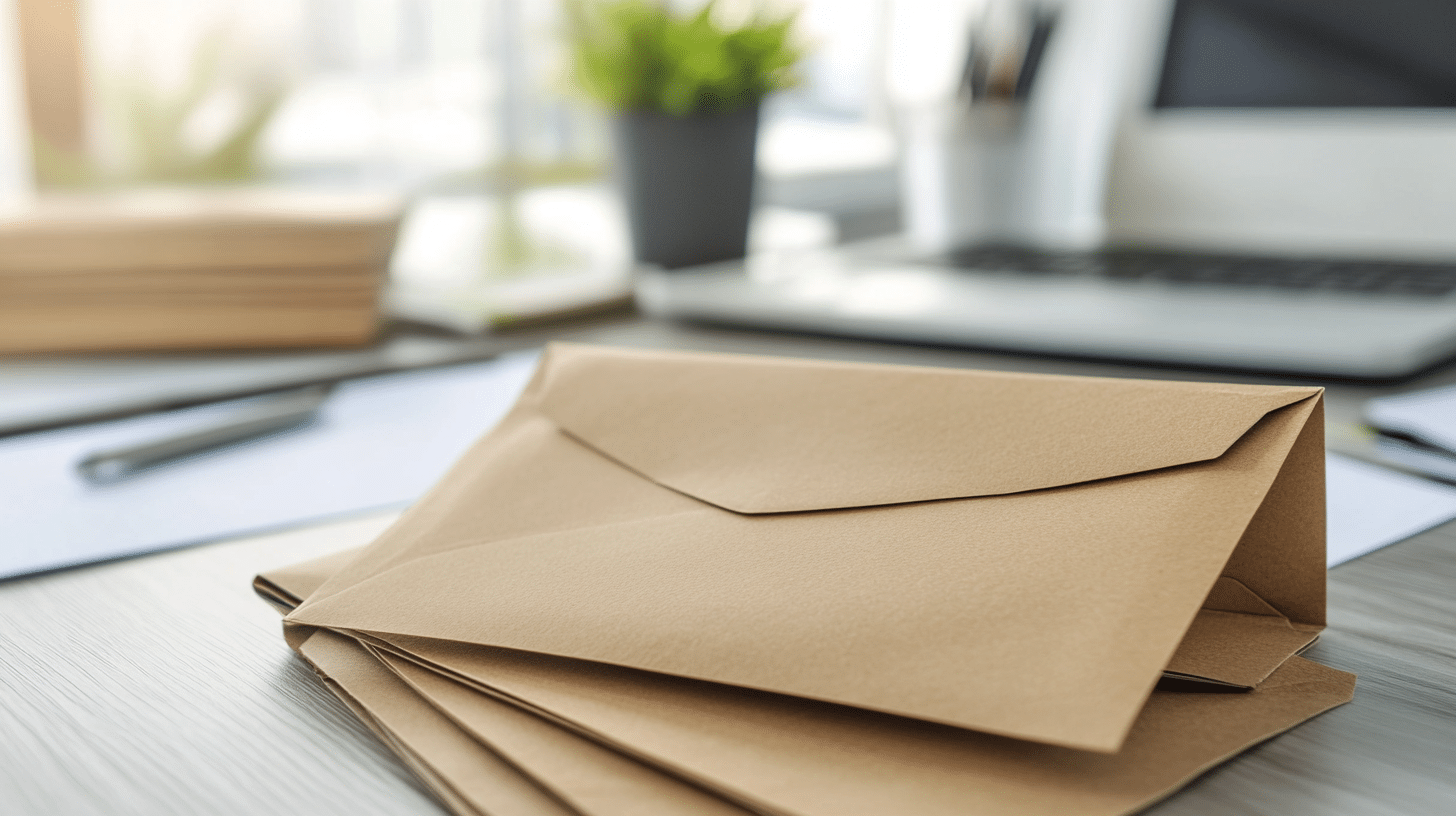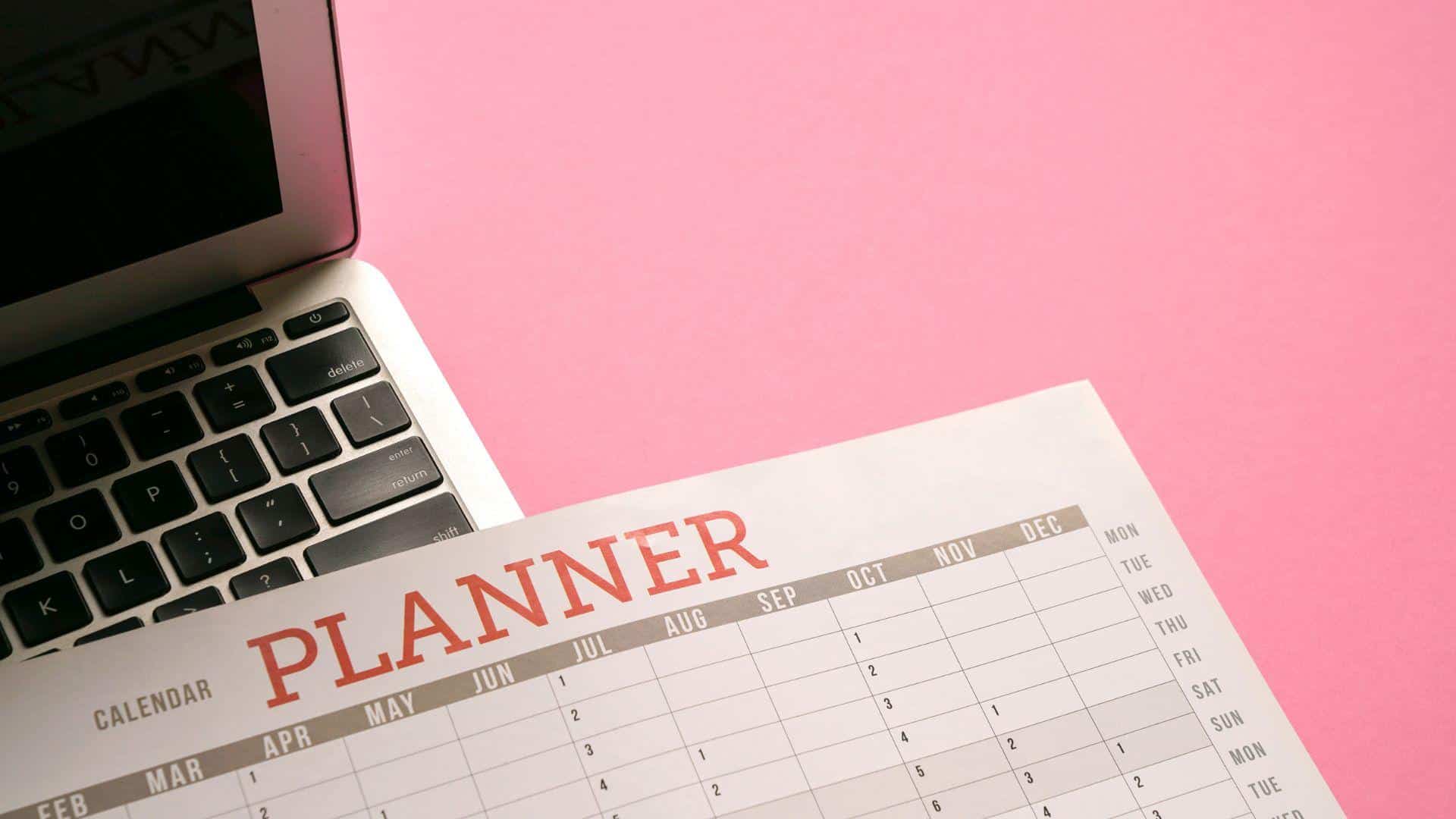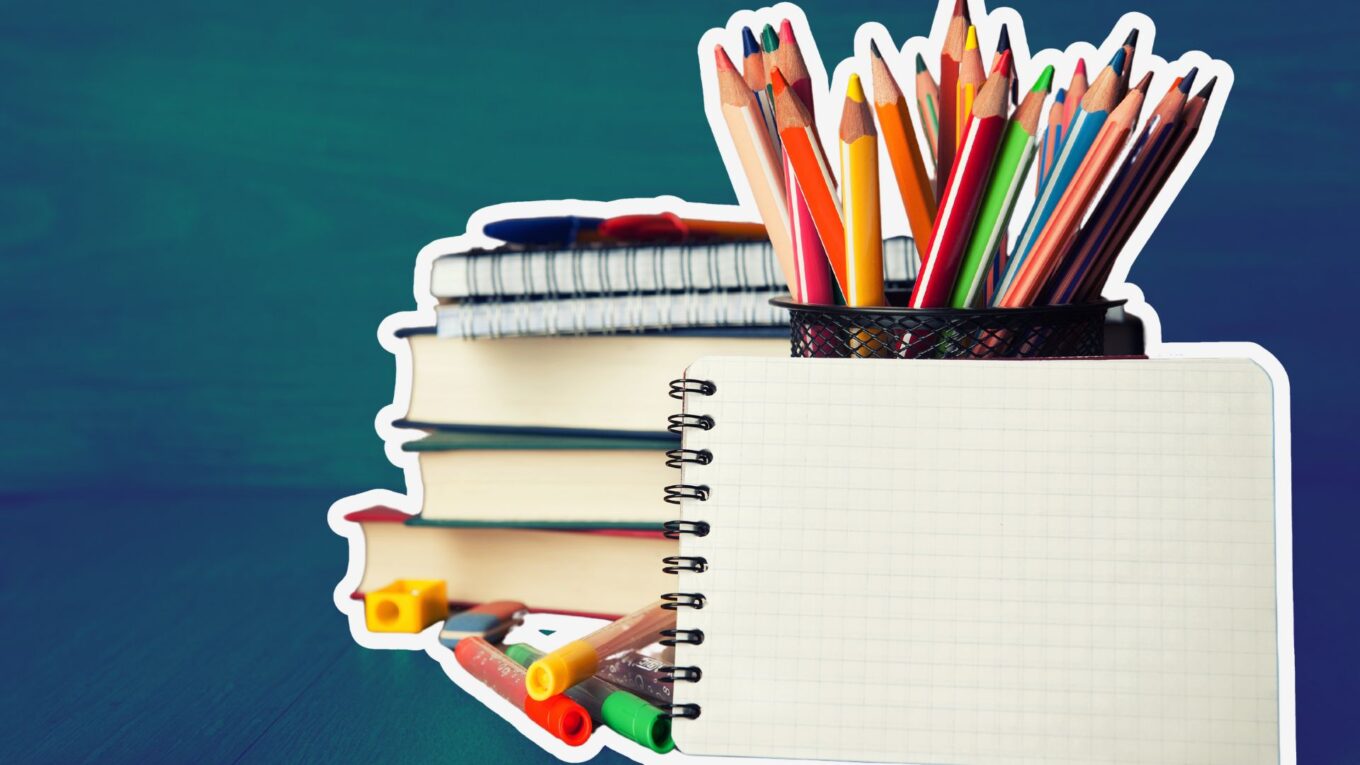Many office workers struggle to stay organized and productive. The right tools can make a big difference in getting work done well.
We know how frustrating it is when you can’t find what you need or your supplies run out at the wrong time.
We’re here to help solve that problem.
Our office stationery items list of must-have office items will set you up for success. You’ll learn which supplies are essential for a smooth-running workspace.
This article covers 21+ office stationery items list. We’ll go through each one and explain why it matters.
By the end, you’ll know exactly what to stock up on to boost your efficiency and output at work.
21+ Essentials: Office Stationery Items List
1. Pens

Pens are key tools for office work. They come in many types to suit different needs.
Ballpoint pens use oil-based ink. They write on most surfaces and dry fast, making them good for quick notes.
Gel pens use water-based ink and give smooth, bold lines. They work well for forms and papers that need clear writing.
Fountain pens use liquid ink. They offer a classic look and smooth writing; some people like them for signing papers.
Pens help in many daily tasks. We use them to:
- Write notes
- Sign papers
- Fill out forms
- Mark up documents
2. Pencils

Pencils are useful for tasks that need changes. There are two main types: mechanical and traditional.
Mechanical pencils use thin lead. You can refill them and choose lead thickness. They’re good for:
- Drawing fine lines
- Writing small text
- Doing math
Traditional pencils have wood and graphite. They come in different hardness levels. Uses include:
- Sketching
- Shading
- Writing rough drafts
Here’s a revised version of the content for “Highlighters and markers” within 100 words:
3. Highlighters and markers

Highlighters and markers help make key info stand out. They’re great for sorting and showing data clearly.
Highlighters come in bright colors. We use them to mark important points in texts and color-code notes, which makes finding information later much faster.
Permanent markers write on many surfaces. They’re good for labeling folders and boxes.
Whiteboard markers work on smooth surfaces. They help with drawing charts and writing quick notes during meetings. These dry-erase markers let you update info as needed.
4. Notepads and Notebooks

Notepads and notebooks come in many sizes and styles. They’re key for writing down ideas and plans.
Small notepads fit in pockets. They’re handy for quick notes on the go.
Larger notebooks work well for longer writing tasks. Some have lined pages; others are blank for drawing.
We use them to write down key points and action items in meetings. During brainstorming, they help capture new ideas as they arise.
Spiral notebooks let pages lay flat. Bound books look more formal for client meetings.
5. Sticky Notes

Sticky notes are small, colorful papers with glue on one side. They’re great for quick reminders and short notes.
We use them to:
- Mark pages in books or files
- Write short to-do lists
- Leave messages for others
Their sticky backs let us put them on desks, walls, or in books. They stay in place but can be moved easily. Different colors help sort ideas or tasks. Larger sizes work for group brainstorming on walls.
Sticky notes help keep key information in sight, making remembering tasks easier and staying on track with work.
6. Printer Paper

Printer paper is a must-have in any office. It comes in different types to suit various needs.
A4 size is common in many countries. It works in most printers and copiers. Letter size is standard in some places.
Plain white paper is good for everyday use. Colored paper can help sort different types of documents. The thicker paper feels nicer and looks more formal. It’s good for important letters or reports.
Having the right paper ensures clear, crisp prints.
7. Envelopes

Envelopes come in many sizes and types. They’re key for sending documents safely.
- Standard envelopes work for most letters. Larger ones hold full-size papers without folding.
- Window envelopes show the address through a clear patch. This saves time writing addresses twice.
- Padded envelopes protect items during mailing. They’re good for sending small, fragile things.
Self-sealing envelopes are easy to close without licking or extra tape.
8. Folders

Folders help keep papers tidy and easy to find. They come in different types for various needs.
- Manila folders are simple and sturdy. They’re good for storing papers in drawers or cabinets.
- Hanging folders fit in file drawers. They make it easy to sort and access many files.
- Pocket folders hold loose papers securely. They’re useful for taking to meetings.
- Color-coded folders help group related items. This makes finding what you need faster.
Using folders keeps work spaces neat and protects important papers from damage. Properly using folders also saves time and cuts stress when looking for documents.
9. Binders

Binders are great for keeping lots of papers in order. They come in various sizes to fit different needs.
We use binders to:
- Store project documents
- Keep meeting notes together
- Organize reports
Ring binders let us add or remove pages easily, which helps keep information up to date. Some binders have clear covers, so we can slip in title pages to label them clearly.
Binders with dividers make sorting papers simple. This helps find specific info quickly.
10. Paper Clips and Binder Clips

Paper clips and binder clips keep papers together without holes or glue. This makes them very handy.
Small paper clips work for a few sheets. Jumbo ones hold more papers securely. Binder clips come in various sizes. They can have many pages and are easy to remove.
We use them to:
- Group related documents
- Keep stacks of paper tidy
- Mark important pages
These clips don’t damage papers. This makes them good for both short-term and long-term use.
11. File Dividers

File dividers help sort papers within folders or binders. They make finding specific documents much faster.
Tab dividers stick out past paper edges. This lets us see labels easily.
We can write on tabs or use printed inserts, which helps label sections clearly. Some dividers have pockets, which are good for holding loose papers or notes.
Using dividers, we can:
- Sort papers by date
- Group items by topic
- Create A-Z filing systems
12. Staplers and Staples

Staplers and staples are key for keeping papers together. They’re simple but very useful.
We use staplers to:
- Join multi-page documents
- Attach receipts to forms
- Secure paper bags or envelopes
Desktop staplers work for most tasks. Heavy-duty ones handle thick stacks of paper.
Staple removers help remove staples without tearing papers, which is useful when adding or removing pages. Staplers and staples help keep work neat and organized.
13. Hole Punch

A hole punch is a tool that puts holes in paper. It’s key for using binders and some file systems.
We use hole punches to:
- Prep papers for ring binders
- Make holes for prong fasteners
- Create custom planners or notebooks
Two-hole punches work for basic needs. Three-hole ones are common for larger binders.
Using a hole punch makes storing and finding papers in binders much easier.
14. Tape and Tape Dispenser

Tape and tape dispensers are must-haves in any office. They help with many tasks.
We use tape to:
- Seal envelopes and packages
- Stick papers together
- Fix torn documents
Clear tape is good for most jobs, and colored tape can mark or highlight things. Tape dispensers make using tape easier. Desktop dispensers are good for frequent use, and handheld ones work well when moving around the office.
Having tape on hand helps solve many small problems quickly and neatly.
15. Scissors

Scissors are simple but vital office tools. They help with many cutting tasks.
We use scissors to:
- Open packages
- Cut paper to size
- Trim photos or labels
Small scissors work for most desk jobs. Larger ones help with bigger cutting tasks.
Safety scissors have blunt tips. They’re good for shared spaces or where safety is a big concern.
16. USB Drives

USB drives, also called flash drives, are small but powerful. They help move and store digital files.
We use USB drives to:
- Transfer files between computers
- Back up important documents
- Share large files with others
They come in different storage sizes, allowing us to pick based on our needs. Some USB drives have extra features like password protection or rugged cases.
USB drives are easy to carry. This makes them great for taking work home or to meetings.
17. Cable Organizers

Cable organizers help keep cords tidy and easy to use. They cut the clutter and make workspaces look neater.
We use them to:
- Group computer cords together
- Keep charger cables from tangling
- Sort cords by device or use
There are many types. Some wrap around cords, and others stick to desks. Labels can help identify which cord is which, saving time when switching devices.
Using cable organizers makes it easier to clean around electronics. It also helps prevent tripping on loose cords.
18. Calendars and Planners

Calendars and planners help us track dates and tasks. They’re key for staying on top of work.
Wall calendars give a big-picture view. They’re good for team schedules.
Desk calendars are handy for daily use. We can jot down quick notes on them.
Digital planners sync across devices. This helps when we’re out of the office.
Paper planners let us see our whole week at once. Many have space for to-do lists.
Using calendars and planners helps:
- Remember important dates
- Plan projects
- Set and meet deadlines
Having a clear view of our schedule keeps work flowing smoothly.
19. Desk Organizers

Desk organizers keep small items tidy and easy to reach. They help create a neat workspace.
We use them to hold:
- Pens and pencils
- Paper clips and rubber bands
- Sticky notes and notepads
Some organizers have drawers for private items, while others are open for quick access. They also come in many styles, allowing us to match them to our desk decor.
Using desk organizers saves time. We don’t have to search for small items.
20. Rubber Bands

Rubber bands are simple but useful office supplies. They help keep things together neatly.
We use rubber bands to:
- Bundle papers or folders
- Group pens or pencils
- Keep boxes closed
They come in different sizes. This lets us choose based on what we’re bundling.
Rubber bands are cheap and reusable, making them a cost-effective office supply. Having rubber bands on hand helps us organize quickly and easily.
21. Packing Tape

Packing tape is strong tape for sealing boxes and packages. It’s key for shipping items safely.
We use packing tape to:
- Close boxes securely
- Reinforce package seams
- Attach labels to packages
Clear tape lets labels show through, while brown tape matches cardboard boxes. Tape guns make applying tape faster and are good for sealing lots of boxes.
Water-activated tape sticks very well. It’s good for heavy or valuable items.
22. Bubble Wrap

Bubble wrap is a packing material with air-filled bubbles. It helps protect items during shipping.
We use bubble wrap to:
- Wrap fragile items
- Fill space in boxes
- Cushion corners and edges
Large bubbles offer more padding. Small bubbles conform to item shapes better.
Reusable bubble wrap helps cut waste. It’s good for items shipped back and forth.
Importance of An Office Stationery Items List
Here are four reasons behind the importance of an office stationery items list.
1. Boosts Efficiency
An office stationery list helps keep supplies on hand. This cuts down on time wasted looking for items or running out to buy them, allowing workers to focus on their tasks without breaks for supply runs.
2. Controls Costs
A list helps track what’s needed and used. This prevents over-buying some items and running short on others. It allows for bulk purchases of often-used supplies, which can save money.
3. Ensures Readiness
With a good list, the office is always ready for any task. Whether it’s a last-minute report or an urgent mailing, having the right supplies means work can proceed smoothly.
4. Reduces Stress
Knowing all needed items are available lowers worker stress. It removes worry about not having the right tools for a job, leading to a more positive and productive work environment.
Wrapping It Up
Having the right office supplies at hand makes work life smoother. Each item contributes to keeping an office running well, from pens and paper to staplers and USB drives.
A well-stocked office helps everyone do their best work. It reduces delays and frustrations caused by missing or broken tools.
Remember, the best supply list fits your specific needs. Consider what your team uses most often, and keep those items well-stocked.
Regular checks of your supplies can prevent last-minute rushes. It’s a good idea to assign someone to manage the office inventory.
Keep your office stocked with our office stationery items list.




